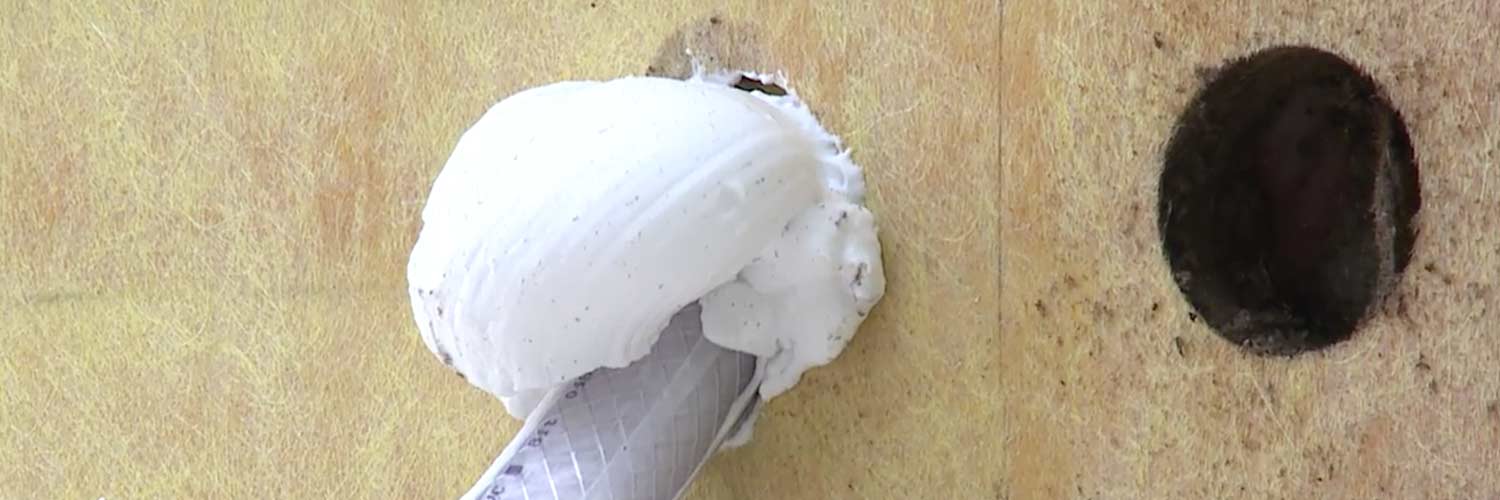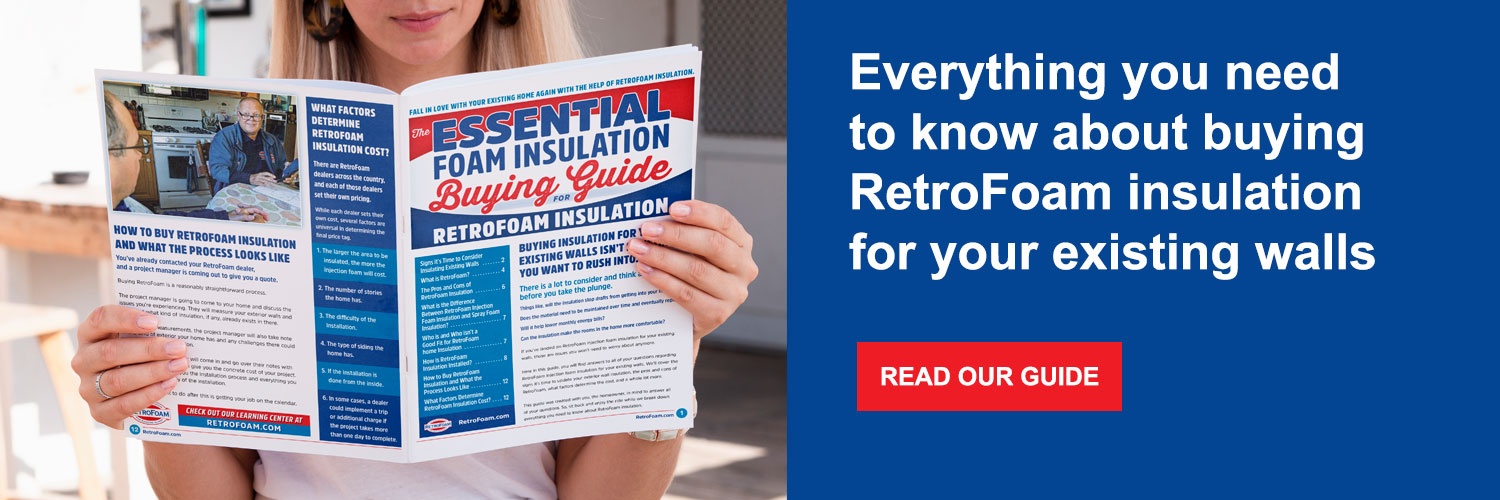How Do RetroFoam Installers Know the Cavity is Full When Insulating Existing Walls?
injection foam insulation | RetroFoam insulation | FAQs | Installation


How Do RetroFoam Installers Know When the Wall Cavity is Full? (Quick Answer)
RetroFoam installers go through rigorous training to ensure the wall cavity is filled with injection foam insulation. This special training includes checking for obstructions in the wall, running the injection hose from the top down to the middle and from the bottom up, as well as listening to the sound of the hose as the foam is injected.
Now let's take a deeper dive into how the installers know the wall cavity is full.
You’ve chosen RetroFoam injection foam insulation for your existing exterior walls because it can be done from the outside.
Still, you have one lingering question – If the installer can’t see into the wall, how do they know when the cavity is filled?
Injection foam insulation is our specialty, so we have perfected the installation technique and train all of our dealers on how to inject the foam when insulating existing walls. This can be done without tearing out your drywall, creating a huge mess and headache.
We want to give you all of the information you need to make an informed choice for your existing wall insulation. With that in mind, we’ll get into the nitty-gritty of the RetroFoam insulation installation process so you have a better understanding of how the installers know your wall cavity is full.
Insulating Existing Walls with RetroFoam Insulation
Let’s get into the installation process and how installers make sure the wall cavity is completely filled.
First, it’s important to know what happens if there is existing insulation in the walls. If there is fiberglass, that material will compress as the foam is injected. If there is cellulose, in some instances it may need to be removed, but more than likely there is no need for removal.
Now let’s talk more in-depth about the installation process.
For this article’s purpose, let’s discuss homes with either aluminum or vinyl siding and homes with brick exteriors.
Homes with aluminum or vinyl will have a row of the siding removed all around the exterior. A 2 ½-inch hole is drilled into the stud cavities, and the installer will use a tool to check for obstructions in the wall. Those obstructions could be fire stops or studs. This also helps the installer locate the next stud and better understand what is in the cavity.
If the installer finds an obstruction in the wall, then another hole is drilled above or below it.
After the cavities have been checked, the installer injects the foam into the wall. They do this by running the hose from the top of the wall cavity to the middle and then from the bottom up.
The installer uses timing as they inject the foam and listen to the hose to know when the cavity is full.
Once every wall cavity has been filled, the drilled holes are plugged, and the siding is replaced.
For homes with brick exteriors, the process is a little different.
Instead of one hole in the wall cavity, homes with brick exterior will have three 5/8-inch holes drilled in the mortar at the top, middle, and bottom of the cavity. After the holes are drilled, the foam is injected, and the holes are filled with mortar.
RetroFoam injection foam insulation has the consistency of shaving cream when it is injected into existing exterior walls. Because of the material’s unique consistency and composition, it flows around any obstacles like pipes and wiring without getting caught up.
Injection Foam Insulation for Your Home
Now that you know more about how RetroFoam installers know when the wall cavity is full, it’s time to find a dealer near you.
RetroFoam has dealers across the country who are at your disposal to help make your home more comfortable and energy-efficient. Check out the Dealer Finder page on our website to find a dealer near you.
Related Articles
How to Tell if There is Insulation in the Wall
What is the Difference Between RetroFoam Injection Foam and Spray Foam Insulation?
About Amanda Emery
Amanda previously has worked as a breaking news and crime reporter, TV news producer, and editor. As a journalist, she has won several awards from The Society of Professional Journalists - Detroit Chapter and the Michigan Press Association. Amanda uses her experience as a journalist to write content that will help educate homeowners on foam insulation benefits. When Amanda isn’t writing, she’s spending time with her husband Chris, daughter Lilith-Maeve, and rescued huskies Danger and Wendigo. She also loves knitting, making art, and cooking.


